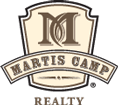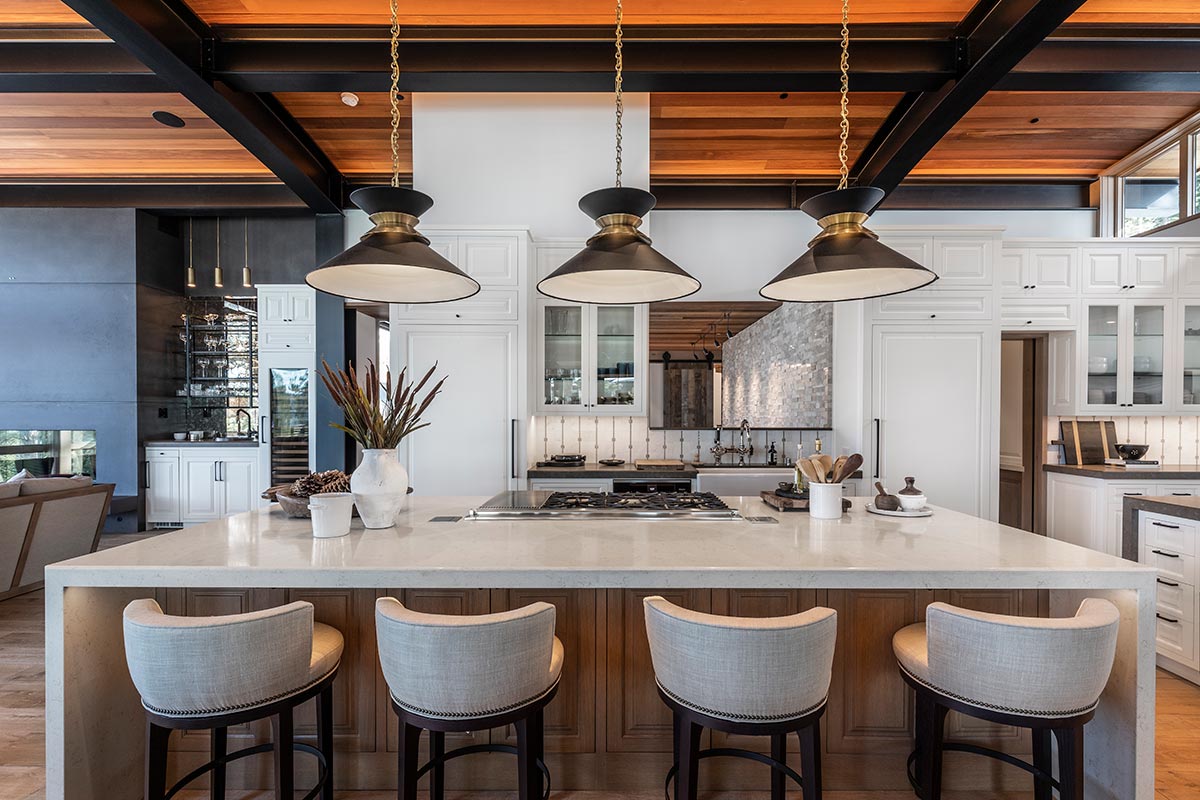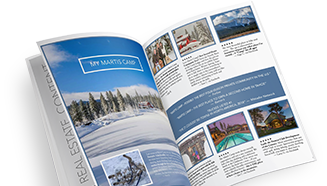One look at the portfolio of homes in Martis Camp and you’ll see they share a few features in common: quality, creativity, and the uncommon ability to balance artistic style with everyday living. Here, a variety of Martis Camp’s finest design minds share their insights on how they make reality of their client’s dreams.
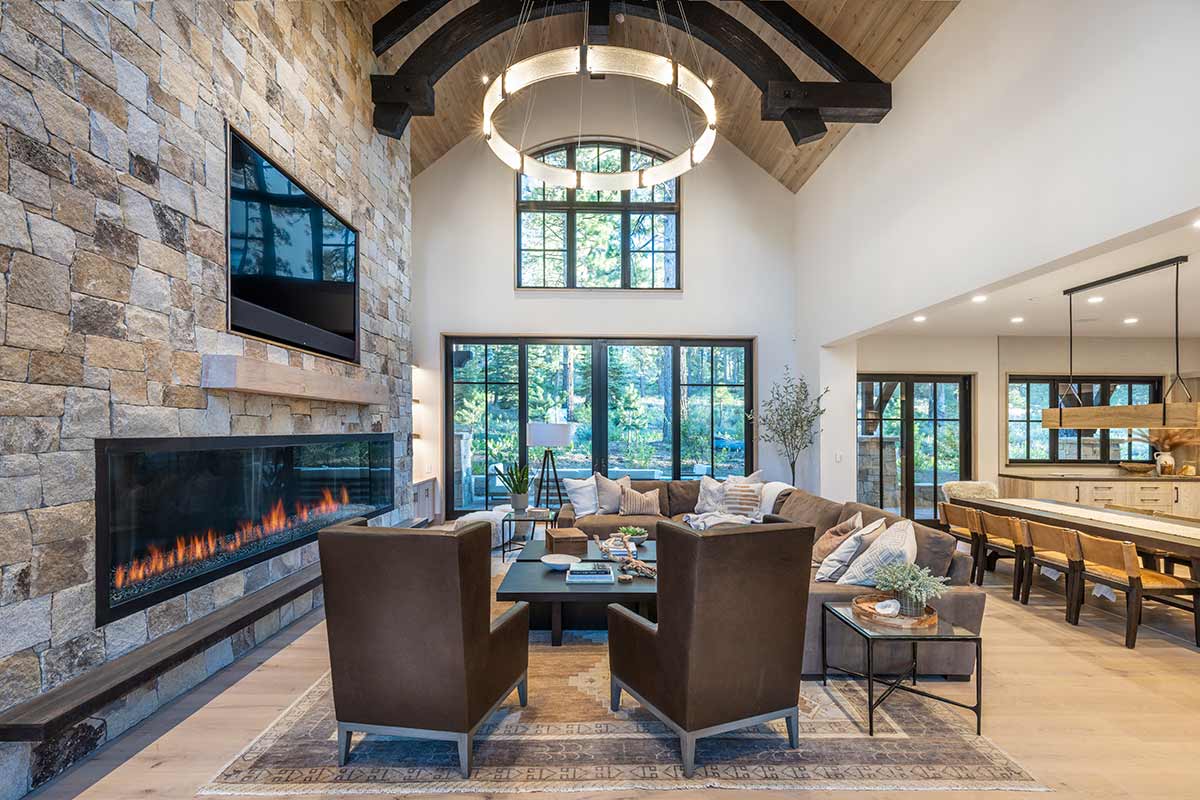
THE EVOLUTION OF LAKE TAHOE ARCHITECTURAL TRENDS.
From when we first put pen to paper, designing our early Martis Camp projects back in the Spring of 2007, until now, we have seen many different architectural style trends in the community. When Martis Camp first launched, it presented new opportunities for architects to design contemporary work. The guidelines stressed quality of design, but were not overly restrictive, and did not prescribe the traditional aesthetic so many of the other developments in the region did. Architects jumped at the chance to design homes in a new, fresh style, and many of the early homes in Martis Camp embraced a ‘Mountain Contemporary’ aesthetic. Of course, there were also many ‘Mountain Traditional’ and even rustic homes designed, but a clear preference emerged for more contemporary architecture in the early years of Martis Camp.
In the ensuing 15+ years, we have seen an evolution of tastes and styles. The pendulum has swung back to a design aesthetic more in the middle – a melding of the best aspects of both traditional architecture and more contemporary design. At SANDBOX, we call this fresh take on regional architecture, ‘California Alpine’. This style may incorporate a mix of shed and gable roof forms, deliberately exposed steel paired with rustic timbers, a contemporary use of bold glass to bring in light and views, and the combination of natural woods with painted finishes. As a firm designing homes across the country, it has been very interesting to watch how the trends that started at Martis Camp influence what is happening in other communities, from Utah to Montana, to Colorado and beyond. At the end of the day, Martis Camp has been ground zero for some of the most innovative and beautiful mountain homes in the world!
SCOTT GILLESPIE
SANDBOX STUDIO
www.thesandboxstudio.com
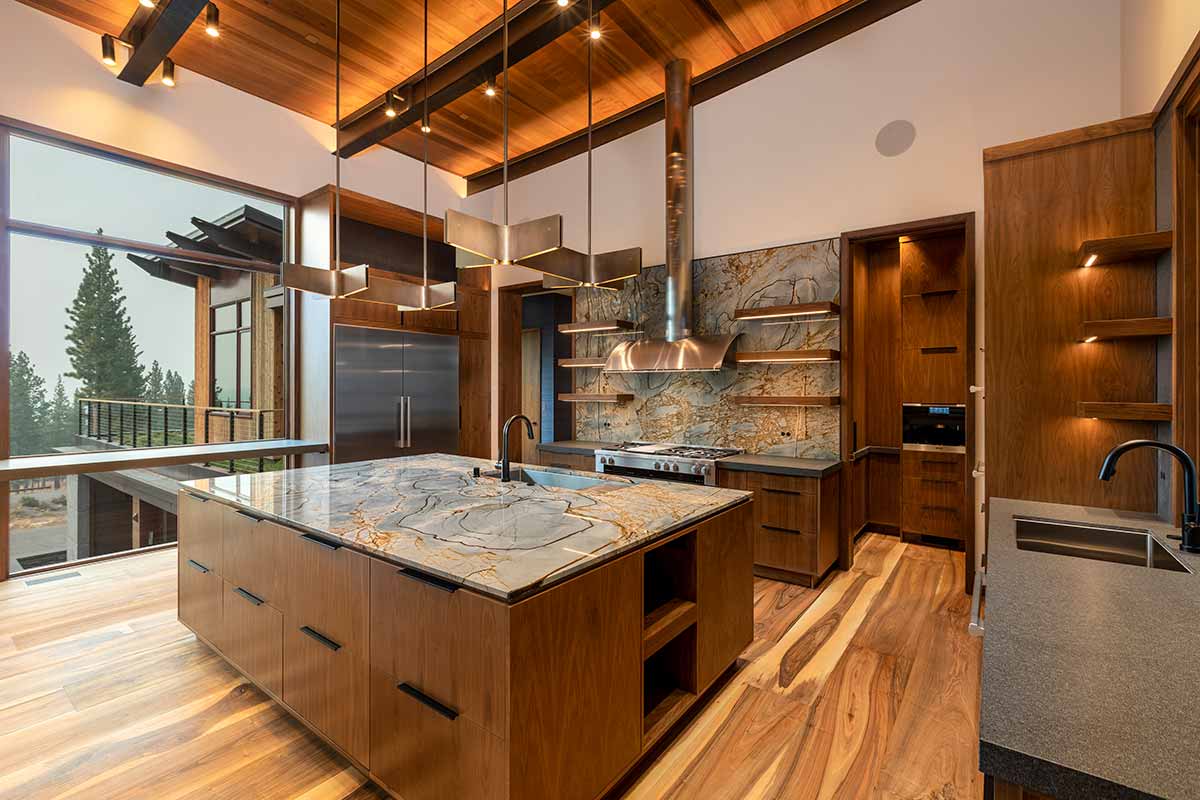
FINDING INSPIRATION.
I was recently asked about drawing inspiration for my projects and how to start the creative process when you have a blank slate to design.
I have come to realize that I have used multiple techniques to get started with my clients. There are many possibilities when you start exploring the field of creativity and the inspiration to get started. I will name a few and explain briefly my process.
The architecture: It is imperative to keep in mind the architecture. There are elements that need to be repeated or coordinated, especially when there are large openings to the exterior and transparency. There are other circumstances when driving the interior design in an opposite direction from what the architecture is calling for, and that in itself can be a wonderful way to explore new opportunities.
A painting or object: we have used a painting or an object in previous projects to inform color schemes, texture and patterns, forms and repetitions, and much more that you can find while observing and dissecting the compositions. It is really incredible to see how this can be an effective way to keep cohesive decision making in the process of designing interiors.
Nature: To me a favorite! Being so lucky to design homes nestled in such beautiful geographic locations, especially in the mountains and around Lake Tahoe, it becomes impossible to not design spaces inspired by the snowy day, the shade under the trees, a forest and its filtered lighting, the boulders, tree bark and the multiple shades and hues found in Tahoe’s water.
Marcio Decker
ASPEN LEAF INTERIORS
www.aspenleafinteriors.com
Photo courtesy Tom Zikas – Aspen Leaf Interiors
A SPACE WE LOVE.
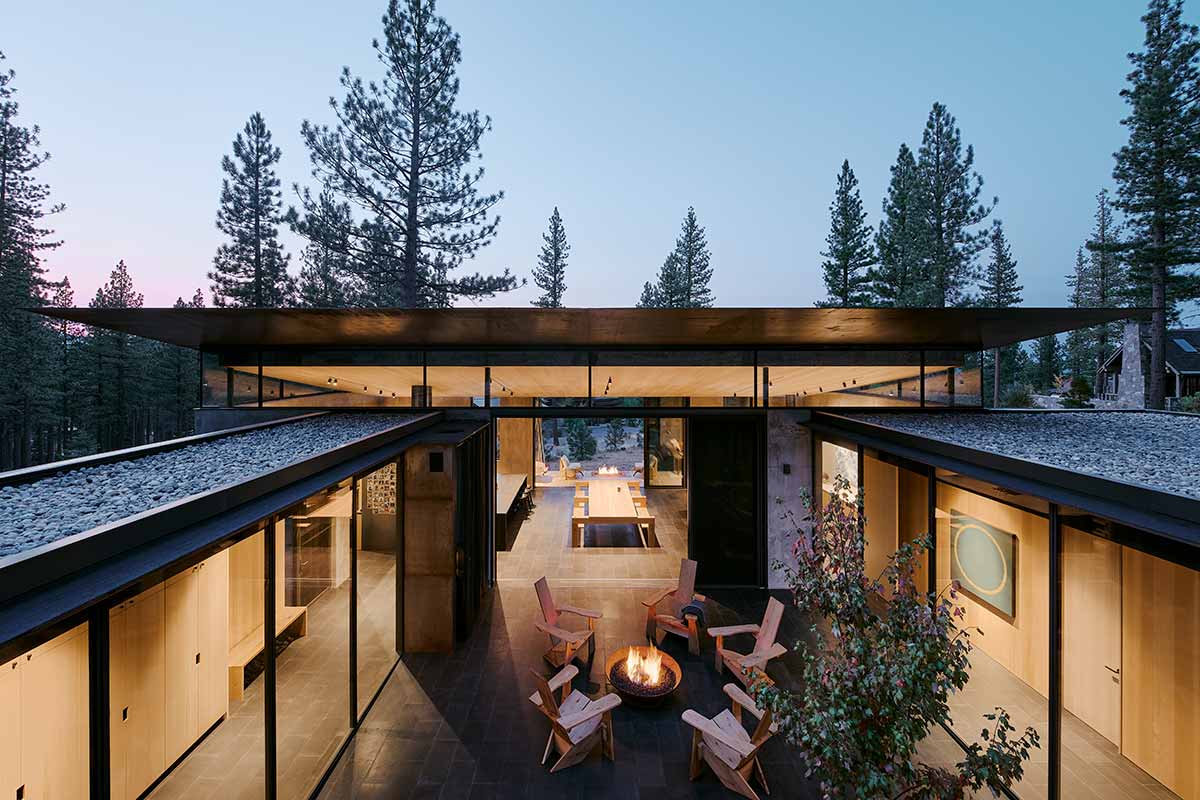
When considering “home,” … “To us … it’s not the experience, in the singular, but experiences—24 hours of them, and it’s really about the verbs: breathing, eating, sleeping, cooking, entering, leaving, loving, living. And the way you do those things. It’s not so much their appearance, although it’s important. The act of doing things makes up our experiences for the day.” … experiences … help to determine the form and function of a home. They also dictate or surpass physical appearance.
The emphasis on experience … is aided by minimalist design. “The most powerful aspect of minimalism,” … “is we stop focusing on the ocular view of the project and start focusing on the experience. We are no longer ‘decorating’ or providing some sort of nostalgic entertainment. Now, the focus is on the light and the way it lands on the material, the concrete, and the relationship and the interaction between the concrete wall, the entire mass, and the sun. We are focused on what that means. Our minds, our thoughts are not violated by objects. Elements within the house and the landscape become more active, more interesting, more colorful. They glow when the interior is subdued.” Pared-down design, perhaps seemingly simplistic, creates the opportunity for depth and meaning. Objects no longer dominate the view. Instead, … nature and natural elements become the centerpieces, perpetually varied and perpetually rich.
“A Space We Love” – Excerpted from “Sensory Design and Eliciting Emotion: Theories of Home, Living and What it Means to Experience a Space.”
GREG FAULKNER
FAULKNER ARCHITECTS
www.faulknerarchitects.com
Photo courtesy Joe Fletcher Photography – Faulkner Architects
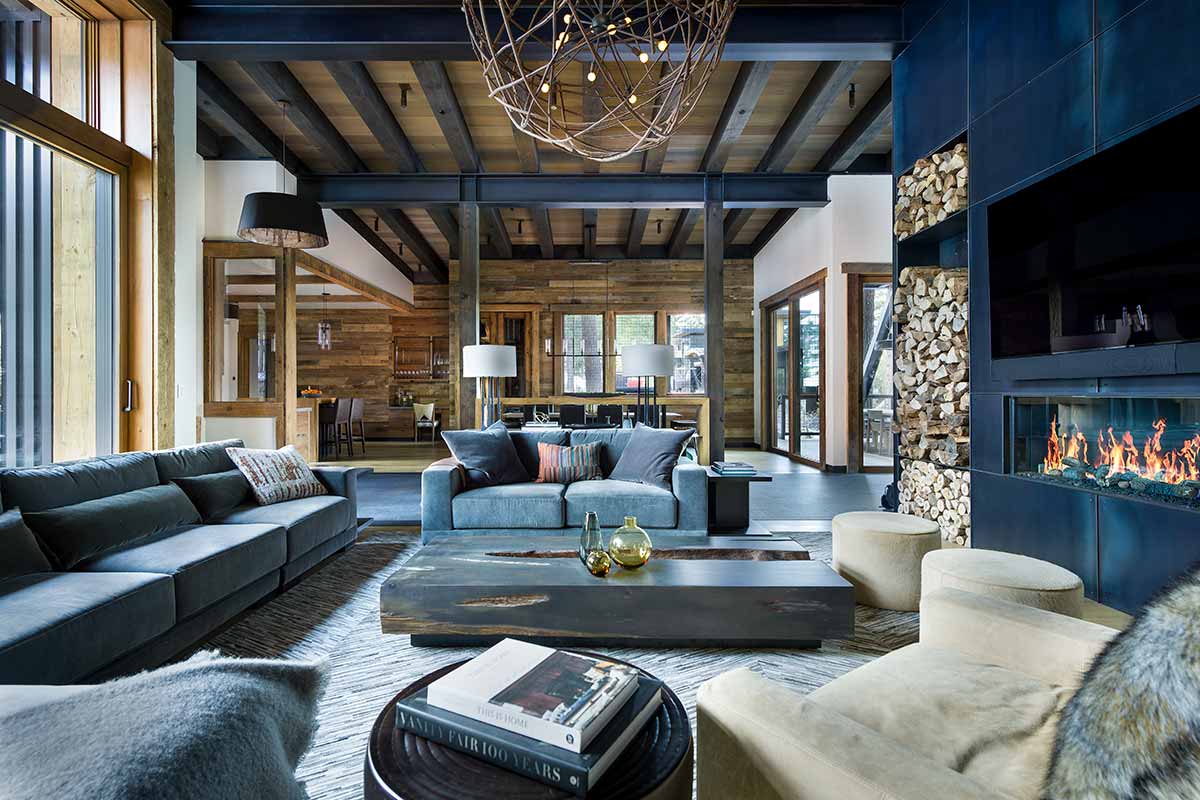
UNCOVERING THAT MOUNTAIN HOME MAGIC.
Mountain Design encompasses a spectrum of styles ranging from the classic lodge to extreme modernism. When designing mountain homes void of traditional cues like logs, chinking, and antlers, we risk creating a “that could be anywhere” style home. Within this diverse design climate, we have to ask what makes a home feel like it belongs in the mountains and not on the beach in Malibu or a vineyard in Napa. At our design firm in downtown Truckee, we run the gamut on architectural and interior styles but always ensure our mountain homes belong in the mountains. Using the above image as a reference, here are some tips to give your home a distinct mountain identity.
Expose Structure: A mountain home, whether it is a tiny cabin or a modern estate, requires more structure to withstand snow loads and storms. Exposing and finishing the amped up structure like we did in the above home ties the architecture to its mountain setting.
Mix Modern Materials with Natural Finishes: “Mountainize” modern materials like concrete, steel and glass by pairing them with natural wood elements. In the above home, hot-rolled steel paneling lends a modern edge while the reclaimed Douglas Fir paneling connects the space to the forest surroundings.
Stack some Logs: A stack of real logs, decorative and/or functional, conjures the cozy cabin feel. We like to build log storage into our designs like we did in the above image, but there are many stylish freestanding log storage solutions out there as well.
Add a touch of wildlife: Foster the rustic hunting cabin feel by bringing in elements of the wild like fur, hair-on-hide, and antlers. Alternatively, faux furs, vegan leathers, and resin antlers deliver the natural warmth of their real counterparts. Here we incorporated faux-fur pillows with a hair-on-hide chevron rug evoking cabin style in a contemporary space.
Make it Mountain Luxe: To create a luxurious yet still mountain appropriate style, pair the wild and rustic with refined finishes and modern silhouettes. In the above image, velvet sofas with clean lines add chic modernism to the rustic elements in the space giving it that Luxe Lodge feel.
Natalie Zirbel, Interior Designer at
Dennis E. Zirbel Architect
www.zirbelarchitect.com
Photo courtesy Chris Murray Productions – Dennis E. Zirbel Architect
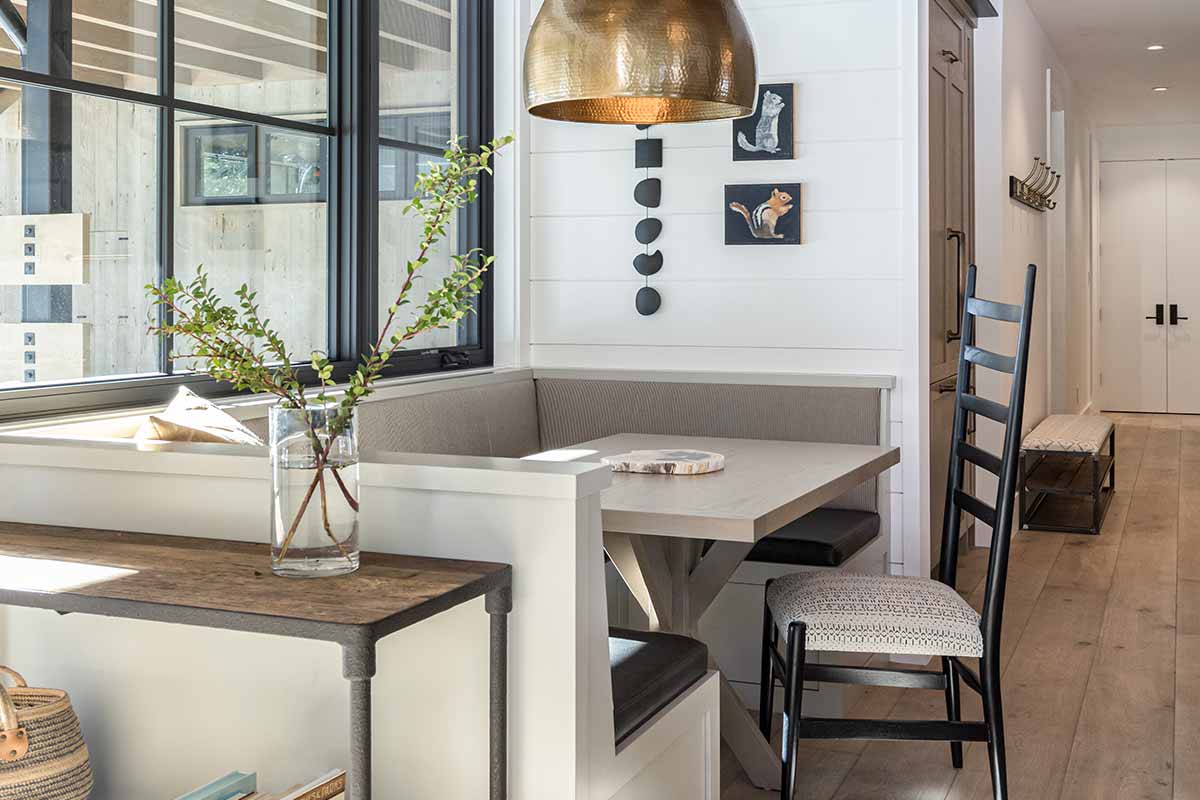
WHY HIRE AN INTERIOR DESIGNER?
Are you starting a new construction build? A remodel for your kitchen? Or perhaps just need some new furniture. It’s quite clear why you would need a Contractor or Architect, but an Interior Designer? You might feel you can easily select product and coordinate with the contractor what needs to be done and save yourself money. Read on to learn why an Interior designer can help save you time and money.
Interior design is the ability to understand the behavior of a client and create functional spaces that provide protection, health and safety in an aesthetic manner. An interior decorator decorates, an Interior Designer designs.
When a designer begins creating a space, we are considering all aspects with a professionally trained eye and knowledge base. An Interior Designer wears a hat of many trades. A certified designer understands electrical, cabinetry, tile, wood floor, carpet types, fireplace units, framing, structural, and even mechanical to be able to know how items can be installed and to help foresee potential issues.
A designer is also your protector of the design and intent of your project. Often due to expenses, a sub might want to cut corners. You need someone to negotiate and stand up for you. A liaison that can visit the jobsite, oversee progress, and foresee when items are installed incorrectly all while documenting all steps of the construction process. This avoids wasting time and money.
Lastly, the fun part, furniture, and accessories. Selecting and ordering furniture, art, etc. through a designer is what gets you access to designer product at a better price. By allowing an interior designer to order these items saves you from having to track, schedule install, and handle the claims when items are damaged or missing.
An Interior Designer should be hired to not only stylize your home to show a piece of you in a fabulous and stunning way but also to make the entire process easier. Building or remodeling a home can be very stressful and expensive. Shouldn’t it be done right the first time and perhaps even be fun?
DEBBIE COSTA
MOXIE DESIGN STUDIO
www.moxieidstudio.com
Photo courtesy Kat Alves Photography – Moxie Design Studio
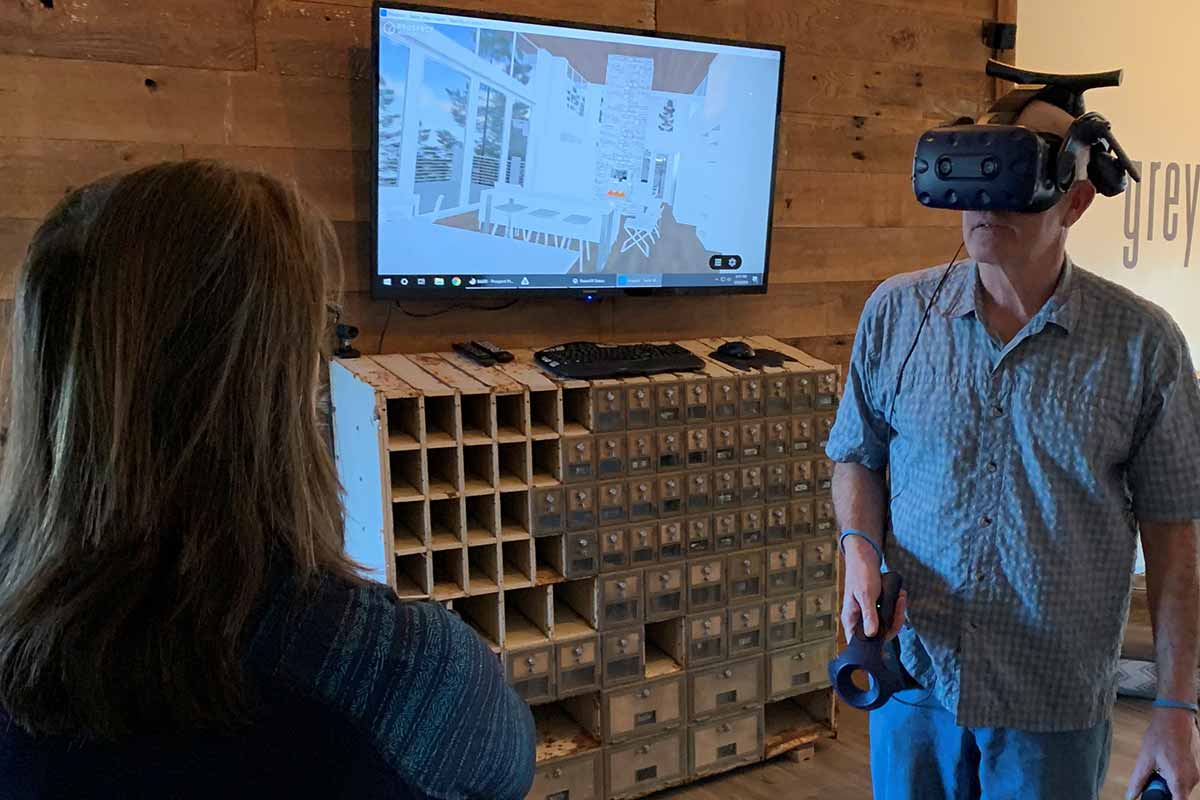
EXPLORING DIGITAL MODELS WITH VIRTUAL REALITY.
The architectural design process is generally the same for architects. One starts with a “Program” – asking all the varied questions of your future homeowner that would give you insight to their goals, needs and dreams for their home. Once that living document is codified, the most creative part of the design process an architect will embark begins. Conceptual Design.
Using that Program, a topographical survey, and the Martis Camp Design Guidelines, we architects get busy with lots of ideas on how to solve the problem – a housing problem of sorts. While most architects solve the problem in one or two ways only, at TGMA, we provide three and up to five concepts. Some home concepts will work better than others right away but upon lengthy discussions and reviews, it becomes clear that each has led to interesting discussions and insightful clues to those goals, needs and dreams. That is really our goal for looking at so many varied house-assemblages. Often two concepts are then selected for further development synthesizing the best of all the concepts.
Along the way, whether immediately with the four or so initial concepts or upon developing the next batch, architects’ modelers get the call. Their work is to create 3d computer models for which the concepts’ rooflines, massings and volumetrics begin to tell a more complete story to our clients.
What happens next at Todd Gordon Mather Architect is somewhat magical. In our Virtual Reality (VR) studio, we place our clients inside those digital models using the most up-to-date hardware and software. While viewing a digital 3d model on a computer screen is quite neat, putting our clients virtually within the model to view it, walk around it at full scale and meander through the conceptual home as it is being developed is truly exciting for our clients …and us.
This technology serves not only the client so they can make educated decisions while we are designing their home, but it also enables us to share the home in a unique way with our structural engineers and interior designers. It’s a win-win-win method to designing these stunning Martis Camp homes.
Todd Mather
TGM ARCHITECT
www.tgmarchitect.com
Photo courtesy TGM Architect
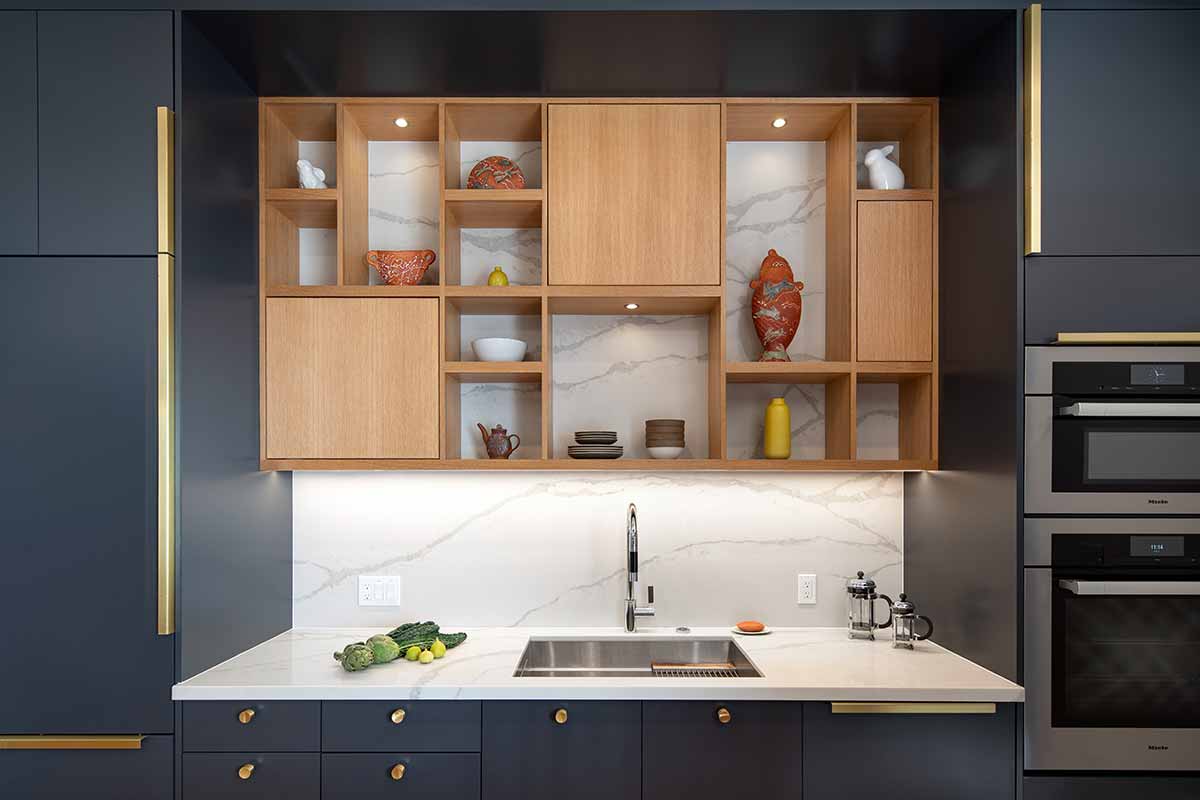
WHY HIRE AN ARCHITECT?
Deciding when and why to work with an architect is a big decision, and there are a few essential things to keep in mind as you weigh your options.
Architects go through extensive training, rigorous testing, and years of practice, so you are benefiting from the knowledge they’ve acquired. Their ability to see both the big picture and minute details makes them your greatest ally when navigating a seemingly daunting process. Whether you’re starting with an open lot or an existing home, they’re experienced in balancing the dreams of their clients with practical limitations, grasping the full picture to develop a cohesive, comprehensive design.
Having guided projects through permitting and construction, an experienced architect will have creatively solved a variety of problems and developed a broad frame of reference. They understand planning requirements, placement on the property, and building codes, bringing solutions to problems you weren’t even aware of. They coordinate mechanical, electrical, and structural systems with the architecture to create a safe and healthy home, becoming the most knowledgeable person on your project.
As an experienced architecture firm, our team guides clients through the complex architectural process from beginning to end, in a holistic and collaborative approach. This adds value to your home both emotionally and fiscally, enriching your quality of living while increasing the equity in the property. Our perseverance helps you move into a home that feels just right, which we love to do.
STACY EISENMANN
EISENMANN ARCHITECTURE
www.eisenmannarchitecture.com
Photo courtesy Mark Compton Photography – Eisenmann Architecture
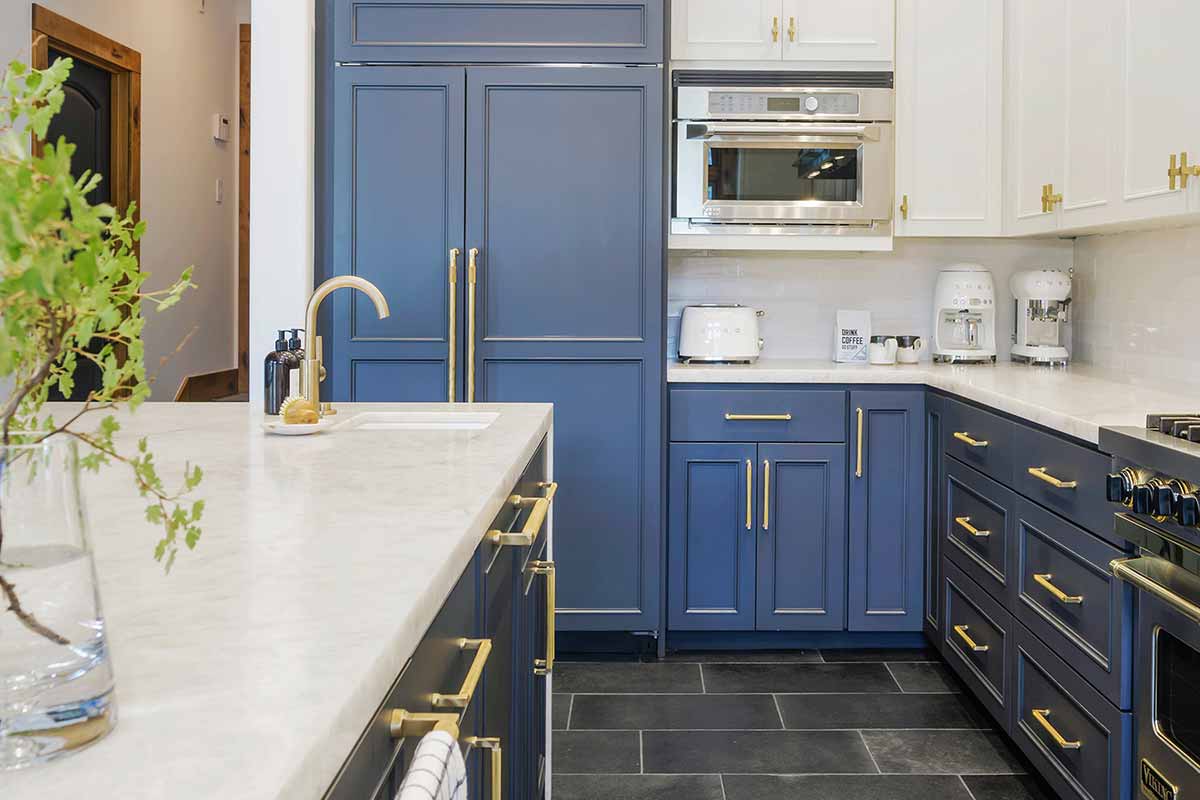
REMODELING THAT MASTERPIECE.
In our practice as interior designers in both San Francisco and the Tahoe area, we find that many of our clients are seeking to remodel a newly purchased home. Sometimes those homes are 20 years old and dated or worn, sometimes they are only 10 years old or less, but do not reflect the personal aesthetic or the lifestyle of the new owners. For clients who are seeking a fast refresh (so as not to miss an entire Tahoe ski season due to an extended remodel!), we are often asked to “facelift” bathrooms and kitchens, and it is remarkable the difference a few swift changes can make. If the layout of the kitchen or bath cabinets is acceptable and workable, one of the best quick fixes in the design world is adding new cabinet faces for a cleaner more modern look, plus a fresh coat of paint, and new cabinet hardware. For far less time and money than starting from scratch with all-new cabinets, this creates a kitchen or bath that looks brand new in a fraction of the time. Along with this, we generally update the backsplashes, counter tops, sinks and faucets.
We find our clients are trading in the granite counters of old for durable man-made materials such as Neolith, or for real quartzites, which are natural, beautiful and more durable than marbles. If the kitchen is over 10 years old, it’s often time to consider an appliance upgrade as well to new, more energy efficient models, or to a preferred brand.
To finish off the space in style, new surface mounted lighting in the form of pendants, sconces or a chandelier can transform and update a room.
Holly Hollenbeck
HSH INTERIORS
www.hsh-interiors.com
